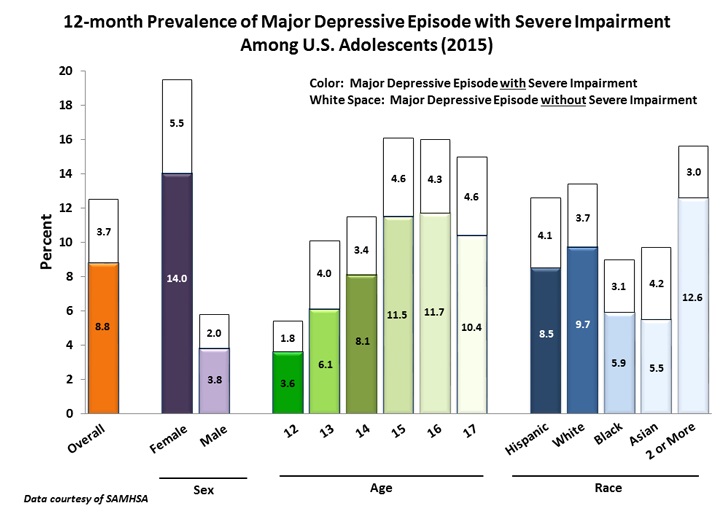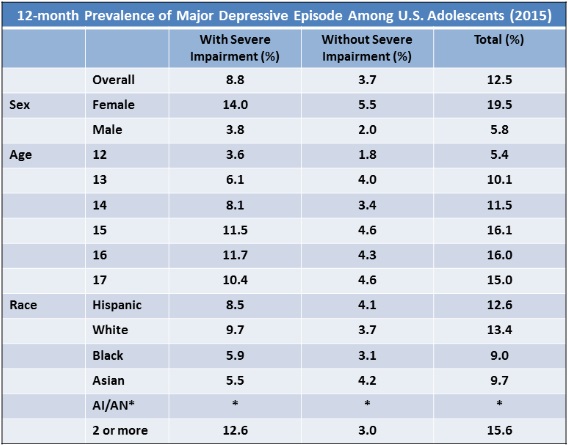Major Depression with Severe Impairment Among Adolescents - Statistics
Tweet
- For some individuals, major depression can result in severe impairments that interfere with or limit one’s ability to carry out major life activities.
- The 12-month prevalence data for major depressive episode with severe impairment presented here are from the National Survey on Drug Use and Health (NSDUH). Based mainly on the 4th edition of the Diagnostic and Statistical Manual of - Mental Disorders (DSM-IV), in the NSDUH study a major depressive episode is defined as:
- A period of two weeks or longer during which there is either depressed mood or loss of interest or pleasure, and at least four other symptoms that reflect a change in functioning, such as problems with sleep, eating, energy, concentration, and self-image.
- Unlike the definition in the DSM-IV, no exclusions were made for a major depressive episode caused by medical illness, bereavement, or substance use disorders.
- The Sheehan Disability Scale (SDS) was used to assess the impact of major depressive episode on a person’s life.
- The SDS asks participants to give a rating of 0 to 10 (with 10 being the highest) for the level of impairment caused by the disorder in each of four role domains: chores at home, school or work, close relationships with family, and social life.
- A rating of ≥7 in at least one domain was considered to be severe impairment.
- Respondents with unknown severity of SDS role impairment data or for whom particular activities were not applicable were excluded.
- In 2015, an estimated 2.1 million adolescents aged 12 to 17 in the United States had at least one major depressive episode in the past year with severe impairment. This number represented 8.8% of the U.S. population aged 12 to 17.



Sometimes crying or laughing
are the only options left,
and laughing feels better right now.

Current Issue
 Self Help Leaflets Take the help of our self help leaflets or booklets. |
 The DG Magazine All about living with depression |












